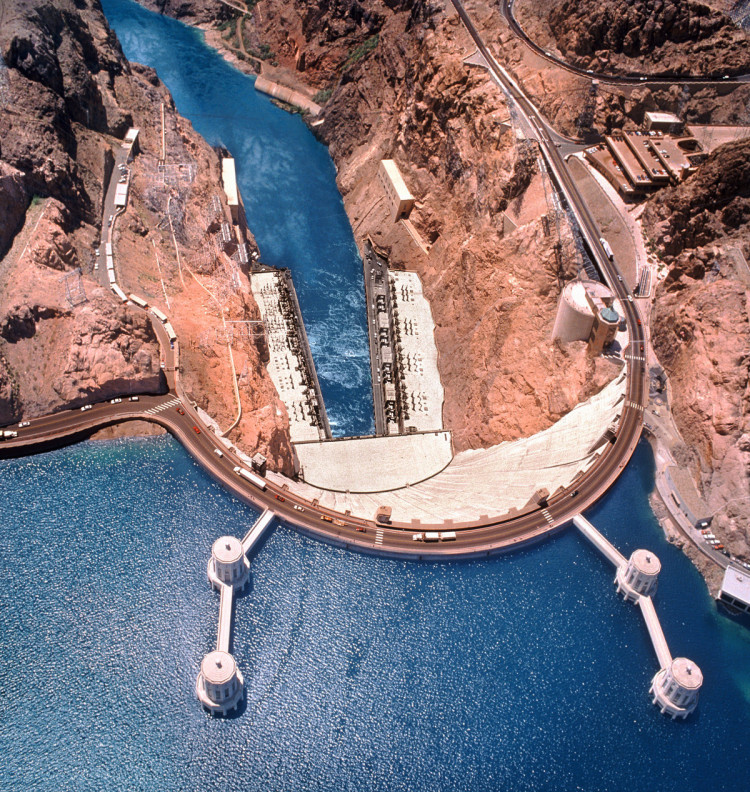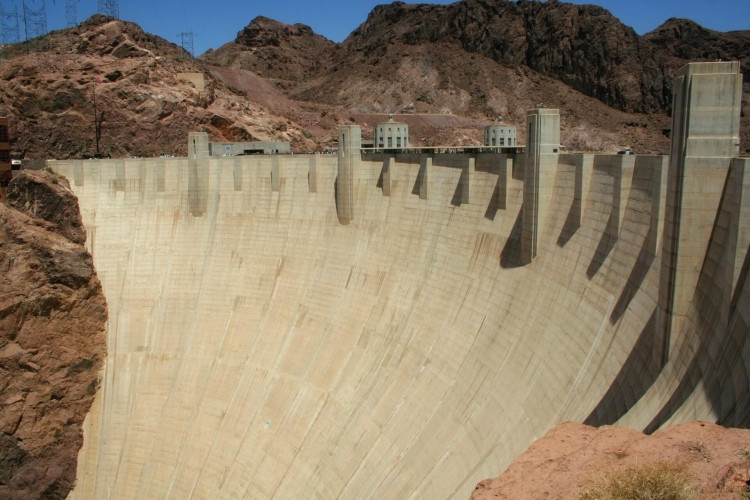Hoover Dam (USA) - concrete dam on the Colorado River
Where is located Hoover Dam?
Address of Hoover Dam is Arizona and Nevada, USA
show on map
When was built Hoover Dam?
Built date of Hoover Dam is 1931 - 1936

Facts, informations and history of Hoover Dam
The firewall was built to improve hydration, obtain electricity and, above all, to control the 2333 kilometer Colorado River, which is unpredictable and has already appeared on the banks.
Hoover Dam (named after the then president Herbert Hoover) was the biggest dam in the world in its time.
It took 2.5 million m³ of concrete to build a dam, which would be enough to build a two-lane road from Seattle to Miami, and the need was 8.2 million tons of stones. The firewall has as much steel as Empire State Building .
At the base is 201 m long and rises 220 m upwards, which is more or less the height of a 70-story skyscraper. At the top, the dam is 375 m long and 14 m thick.
On its northern side formed the lake Mead, one of the largest man-made reservoirs in the world. The length of the lake is 177 km, and the length of the shoreline is 1323 km.
Hoover Dam is the second highest dam in the country and 18 of the highest in the world.
The dam is so thick and durable that it would not have to be curved and would withstand the pressure of water. Engineers thought that residents would feel much safer with a bent dam.
The dam creates 4 billion kilowatt hours a year, which would be enough to handle 1.3 million people.
Architect of Hoover Dam
Construction/building type
Building Hoover Dam is of type Dam, Dam
Architectural style
Architectural style of Hoover Dam is Contemporary
The contemporary architectural style is characterised above all by modern solutions and the latest technologies. It is a style that focuses on minimalism and simplicity of form, but at the same time does not sacrifice high quality and functionality. In the case of residential buildings, the contemporary style is characterised by large glazings, which allow for optimum interior lighting and create an impression of spaciousness. In the case of public buildings, the contemporary architectural style pays attention to the comfort and convenience of the users and the adaptation of the building to the needs of people with disabilities. ... czytaj więcej.
Other dimensions, parameters and frequently asked questions

What capacity have Hoover Dam?
Hoover Dam have capacity 1.24 trillion cubic feet
What material is the building made of?
Hoover Dam is made of the following materials: Concrete
Cost
Build cost of Hoover Dam is 165 million dollars
Other names
The building is also known by other common names or in the original language, i.e. Hoover Dam
Official website
The official website of the building, where up-to-date information can be found, is http://www.usbr.gov/lc/hooverdam/
Photo gallery Add photo
Location on map / How to get there





























Comments to Hoover Dam (31) Average rating: 5 Add comment / Rate building
Based on 31 comments